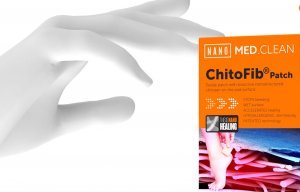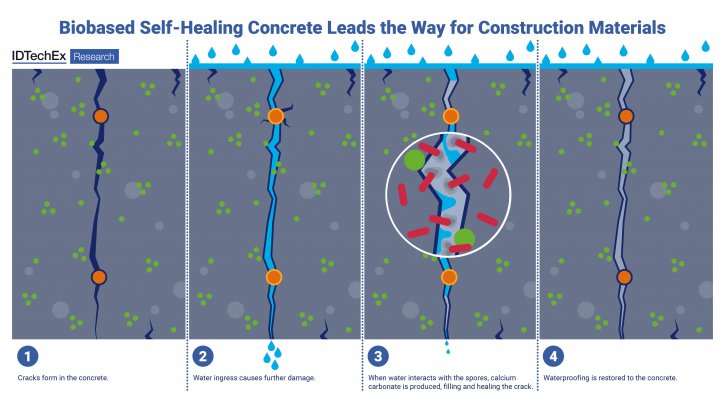
Benefits of chitosan in nanofibre nonwovens
Biological approaches including bacteria-coated fibres pave the way for successful commercialisation.

6th May 2025
Innovation in Textiles
|
USA
Every year, industrialised nations lose approximately 3% of GDP due to issues associated with material corrosion and degradation.
Damage to concrete structures and infrastructure in particular – ranging from small cracks to complete failure – can lead to severe disruptions and repairs can incur significant expense.
An industry is arising, however, around the self-healing of microcracks before they can propagate into larger-scale issues, which is explored in a new report from IDTechEx.
In addition to microcracks, freeze-thaw action can be a major issue when water fills cracks before freezing and expanding, causing further damage in a repetitive cycle. Self-healing concrete is designed to repair these microcracks efficiently.
Many technologies exist, but IDTechEx research finds that biological approaches will lead the way for the successful commercialisation of self-healing concrete.
An ancient approach
Rome wasn’t built in a day, but many of its most beautiful buildings and structures have stood the test of time, remaining standing over two millennia after their construction. Roman concrete is composed of quicklime (calcium oxide), volcanic ash and water, and was produced at high temperatures using a technique called ‘hot mixing’.
Studies have revealed the presence of lime clasts (calcium-rich mineral deposits) visible in Roman architecture as small, distinct white features measuring a few millimetres in size.
When a crack forms, water infiltrates and a calcium-enriched solution is created. Two proposed healing mechanisms exist and in the most straightforward scenario, the solution heals the crack itself. The second and more complex mechanism is known as ‘the Pozzolanic reaction’ and involves the formation of several intermediates at the interface between the volcanic aggregate and the surrounding matrix.
Modern methods
A promising approach from players such as Basilisk involves embedding mineral-producing bacteria into concrete for self-healing purposes. These acid-producing bacteria can remain dormant for over 200 years and serve as catalysts in the crack-repair process. When cracks develop, the bacteria become active, consuming calcium lactate and generating limestone to seal the damage.
The healing process occurs through a biological reaction between unreacted limestone and a calcium-based nutrient. When bacterial spores encounter water, they begin to feed on the calcium lactate, a process that consumes oxygen and helps reduce the risk of steel corrosion. The soluble calcium lactate is converted into insoluble limestone, which hardens and fills the crack.
Alternative approaches to self-healing construction materials are also discussed in the IDTechEx report. Geopolymer concrete is produced from waste materials such as fly ash, and self-healing mechanisms have been proposed, while there is also a compelling method utilising bacteria-coated fibres. The major benefit is that the core of the fibre acts like a stitch and holds the crack closed, restricting the propagation of the crack and minimising the extent of self-healing that is required.
Concrete offers a high-volume route to market for self-healing materials, allowing confidence and trust to be built in the novel approach to increasing the lifespan of structures. Initial risks can be lowered by considering only slabs, with vertical pours for walls delayed until phase two of adoption. From an economic perspective, IDTechEx’s assessment of the market reports a 30% decrease in material costs when adding self-healing properties. This is based on the reduced need for replacements, minimised maintenance and limited downtime in the life-cycle costs.
Self-Healing Materials 2025-2035: Technologies, Applications, and Players report provides an in-depth analysis of this emerging market. Leveraging its expertise in advanced materials, IDTechEx delivers an independent evaluation, covering technology comparisons, industry trends and key player assessments, offering valuable insights into this promising but still-developing sector.

Business intelligence for the fibre, textiles and apparel industries: technologies, innovations, markets, investments, trade policy, sourcing, strategy...
Find out more